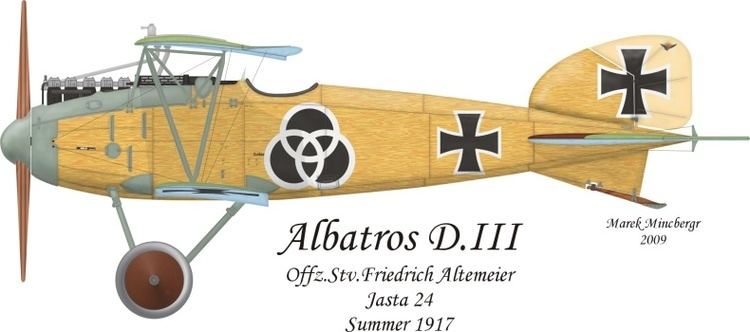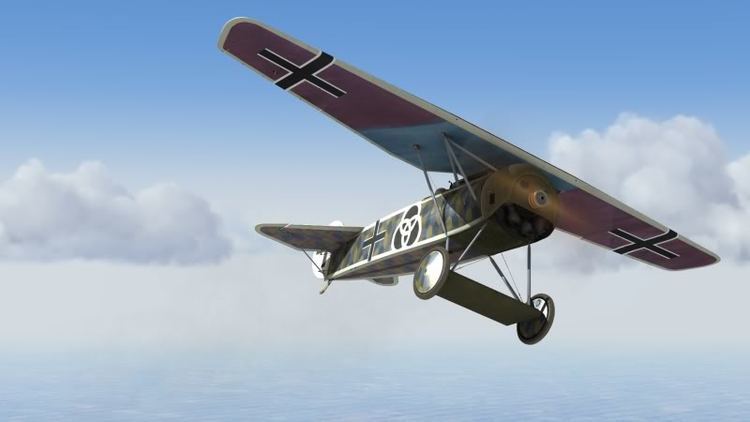Allegiance Germany Name Friedrich Altemeier Rank Offizierstellvertreter | Years of service 1914 - 1918 | |
 | ||
Died September 18, 1968, Germany Unit | ||
Service/branch Infantry; aviation | ||
Friedrich Altemeier (born 4 June 1886 in Niederbecksen (today Bad Oeynhausen), died 18 September 1968) was a World War I fighter ace credited with 21 victories. Due to his distinguished faithful military service and piloting skills, he became one of the test pilots for Germany's last and best fighter airplane of the war, the Fokker D.VIII.
Contents

Early life
Friedrich Altemeier was born in Niederbecksen on 4 June 1886. He went to military school from 1906 until 1908. He worked for Krupp before World War I began.
Early military service
He was called up for military duty on 2 August 1914. Altemeier originally served in the infantry in a machine gun company. He was wounded in action on 15 January 1915.
On 11 August 1915, he transferred to aerial service. After training at Posen, he served first with FA 67, then with Royal Prussian Jasta 14. He then transferred to Royal Saxon Jasta 24 on the Western Front on 1 December 1916.
Aerial victories
Altermeier was promoted to Vizfeldwebel on 13 February 1917. He opened his score with his new squadron on 3 March 1917. He used twin-gunned Albatros D.III fighters, often emblazoned with the triple rings of the Krupp Works, to down a Nieuport 17.
Four months later, he began to score again, downing a RNAS Sopwith Triplane on 7 July and a Spad VII five days later. Then, on 17 August, he shot a double and became an ace.
He triumphed four more times in September, with his last in this string coming on the 26th. He was then wounded, and did not score again that year.
On 19 February 1918, he shot down a RAF SE.5a to again begin his winning ways. This was his tenth victory.
He tallied another win in February, followed by three in March. He then went on hiatus until August, when he scored twice. He had two confirmed victories and one unconfirmed in both September and October. His final victory, on 10 November, the day before the armistice, was his 21st and the jasta's 91st and final one. He and his Staffelfuehrer, Heinrich Kroll, had accounted for half the wins scored by their squadron.
He was awarded the enlisted man's equivalent to the Blue Max, the Military Merit Cross, on 11 April 1918. He was also awarded the Silver Wound Badge, as he had been wounded three times. He also received the Iron Cross.
Altemeier was one of the few pilots entrusted with the most modern German fighter of World War I, the Fokker E.V (sometimes called the Fokker D.VIII).
Post World War I
Friedrich Altemeier survived World War I. He died on 18 September 1968.
